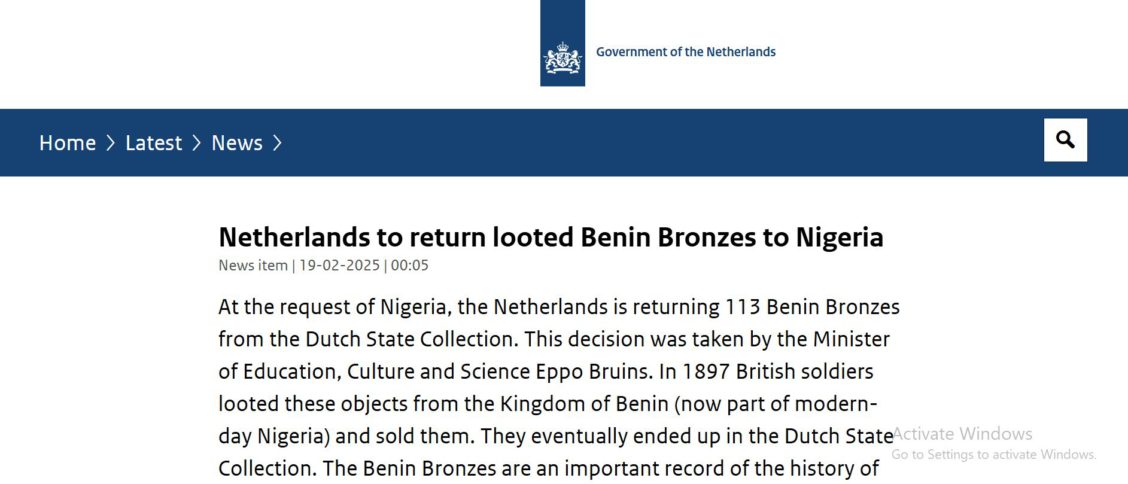When I read in the news last week that the Netherlands would return 113 looted Benin Bronzes to Nigeria, it made me smile – teary.
We can’t change history, nor can we rewrite it, but we can learn from it and take decisive actions not to repeat the negative ones while building on the positive ones.
As a student and lover of history, especially Nigerian history, news like this stirs something in my heart.❤️
Back in secondary school, I enjoyed attending history classes and always looked forward to them. Because of the very small class size (we were just three history students – myself, Ebele and one other student), my history teacher would grab a desk, sit down facing us, and we would sit in front of him like children listening to tales by moonlight. Often, with my hands clasped on my cheeks, I would look intently at our teacher. I am sure he thought I was a very serious student, but to be honest, I was busy admiring his Adam’s apple (laryngeal prominence) as it reverberated with excitement in his throat as he went on and on.😊
In 2014, the year we celebrated our centenary anniversary – the 100th year Nigeria became ‘Nigeria’ – I was fortunate to explore the history of the Nigerian film industry, in a project called the ‘Centenary Project’ where I worked as an intern under the guidance of Dr. Patrick Enaholo.
I traveled a bit and had the opportunity to interview some of the pioneers in our film industry, like Eddie Ugboma, who produced The Mask in 1979 (a film in response to the refusal of the British Museum to release the original Benin Ivory Mask of Queen Idia to celebrate the 1977 Festival of Art and Culture).
I visited the late Francis Oladele, who led the production of Wole Soyinka’s Kongi’s Harvest. I visited the late Moses Olaiya to learn more about his comedy and drama.
The most emotional visit for me, however, was to the Benin National Museum. Although I had my first degree at the University of Benin, I never paid much attention to the history behind the statues that graced the famous Ring Road in Benin City while on campus.
Behind those statues were some of the fallen heroes who resisted the British during the 1897 massacre. The massacre that led to the exile of Oba Ovaranmwen Nogbaisi. The massacre that led to the looting of the Benin antiquities that ended up in many museums across the world, like the Wereldmuseum Leiden – as payment for the 1897 British punitive expedition!
I love the way the Dutch Minister of Education, Culture and Science, Eppo Bruins | Minister van Onderwijs, Cultuur en Wetenschap, puts it:
“This restitution contributes to redressing a historical injustice that is still being felt today. Cultural heritage is essential for telling and living the history of a country and a community. The Benin Bronzes are indispensable to Nigeria. It is good that they are going back.”
Until we can start having painful conversations like this and making redresses, when necessary, we will not find true healing!







